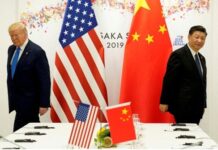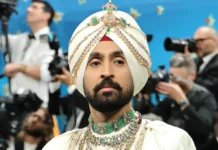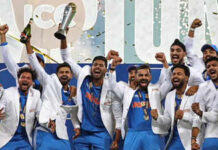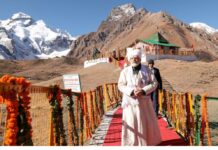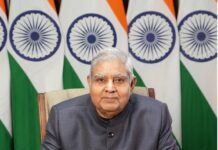In a recent political and cultural development in Nepal, the presence of Uttar Pradesh Chief Minister Yogi Adityanath’s posters at a Kathmandu rally has drawn significant attention across borders. The event, organized to welcome former Nepalese King Gyanendra Shah, prominently featured posters of Yogi Adityanath—earning him the tag of a “poster boy” at the rally. But this visual symbolism is rooted in deep historical and religious ties between Nepal’s former royal family and India’s Goraksh Peeth.
A Deep Spiritual Connection with Goraksh Peeth
The Shah dynasty of Nepal, which ruled the Himalayan nation until the monarchy was abolished in 2008, shares a centuries-old spiritual relationship with the Goraksh Peeth of Gorakhpur. The Peeth is a key religious center of the Nath sect, founded by Guru Gorakhnath, who remains a deeply revered figure in both India and Nepal.
Yogi Adityanath, who currently serves as the head priest (Mahant) of Goraksh Peeth, represents a continuation of this religious lineage. The Shah rulers have long considered themselves followers of Gorakhnath, maintaining the tradition of sending offerings to the Gorakhnath temple on important Hindu festivals like Makar Sankranti and Dussehra. In return, the temple sends back blessed offerings (prasad), symbolizing an enduring spiritual bond.
Cultural Influence Crossing Borders
Yogi Adityanath’s posters at the Kathmandu rally were not merely political visuals but symbols of Hindu identity and spiritual allegiance. His inclusion signified support for Nepal’s growing pro-monarchy and pro-Hindu nation sentiments. Several groups in Nepal have been advocating for the reinstatement of Nepal as a Hindu Rashtra and restoring the monarchy—both causes that Yogi Adityanath has vocally supported in the past.
In fact, in 2015, Yogi Adityanath addressed a rally in Kathmandu promoting Nepal’s Hindu identity. His frequent references to Nepal’s traditional spiritual ties with Gorakhpur’s Goraksh Peeth have made him a popular figure among Nepal’s pro-Hindu groups.
A Rally Steeped in Symbolism
The Kathmandu rally, welcoming ex-King Gyanendra, was filled with overt religious and cultural symbolism. Among the participants was Pradeep Bikram Rana, who reportedly placed a large poster of Yogi Adityanath to represent the spirit of Hindu pride. After allegedly facing backlash from authorities for displaying the poster, he claimed to have taken shelter in Gorakhpur—further solidifying the spiritual and cultural refuge that Goraksh Peeth continues to offer across borders.
Historical Reverence for Nath Sect
The Nath sect holds a special place in Nepalese tradition. As per historical records, Guru Gorakhnath blessed Prithvi Narayan Shah—the founder of modern Nepal—during the formation of the nation. Such stories have cemented the legacy of Goraksh Peeth in Nepal’s historical narrative.
Even today, around 82% of Nepal’s population practices Hinduism, and the reverence for figures like Guru Gorakhnath and Guru Matsyendranath (another revered saint) remains strong. The influence of these spiritual traditions continues to shape political opinions and public expressions, as seen in the recent rally.
Yogi as a Symbol of Hindu Identity
Yogi Adityanath’s presence on posters in Nepal speaks volumes about his influence beyond India’s borders. He is not only viewed as a political leader but also as a symbol of religious and cultural identity by Nepal’s Hindu nationalist groups. His dual identity—as a chief minister and a spiritual head—adds to his appeal in Nepal, especially among groups seeking to revive Hindu traditions and re-establish the monarchy.
Conclusion
Yogi Adityanath’s rise as a “poster boy” in a Nepal rally goes beyond politics. It reflects deep-rooted spiritual ties, shared cultural heritage, and a collective identity that transcends geographical boundaries. As calls for reinstating Nepal’s Hindu Rashtra and monarchy grow stronger, symbols like Yogi Adityanath are likely to continue playing a prominent role in shaping regional discourse rooted in tradition, faith, and history.






